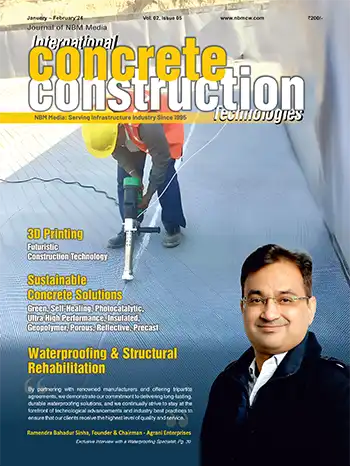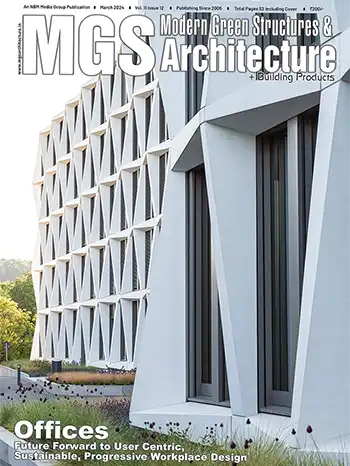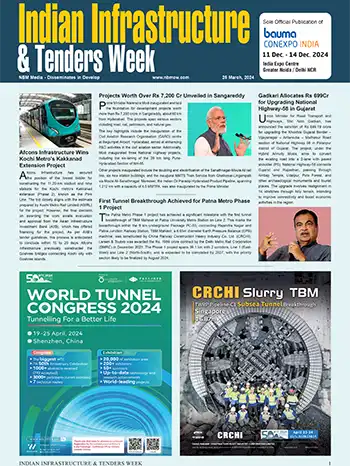Repair of cracks in concrete by using Epoxy and Polyurethane injection resins
Overview
Concretes based on hydraulic binders such as Ordinary Portland Cement have a common tendency to crack. There may be different type of cracks and various reasons for cracking to take place. The main reason is shrinkage in plastic and hardened stage. Sometimes these cracks are minimal and may be ignored or treated on the surface itself. But when the cracks tend to penetrate deeper, they start affecting the durability of concrete. Cracks may appear in a floor slab, foundation, basement slab, roof slabs a beam or a column.These cracks may affect structural, aesthetical or environmental performance of the utility.This creates a need to treat these cracks carefully, with proper materials and techniques. There are a number of methods and techniques which are developed by the construction industry to such cracks. Crack injection using either Epoxy Resin or Polyurethane resin based grouts, is one of the most efficient and effective techniques. Although not new, these techniques and materials have been getting refined and innovative for quite some time.
Conditions, Considerations, and Materials
In order to decide whether to use crack injection, it is important to understand the cracking in a particular place or structure in detail. There may be different reasons for the cracks to appear. One must know if it is drying shrinkage cracking, cracking due to corroding reinforcements or alkali aggregate reactions are involved. Further need is to understand whether the crack is structural or non-structural i.e. on a non-load bearing element. Some cracks may be still developing. Some cracks might have appeared, due to not sufficient movement joints in the structure and may be moving. Some are due to settlement or due to damages during or after curing period. If the crack is subject to subsequent movement, an epoxy repair may not be suitable.Here we will discuss specifically two types of injection materials. Low Viscosity Epoxy resins and Polyurethane resins. The former being mainly used for structural crack repair and the later mainly finding use in situations, where movement is expected or water leakages have to be stopped quickly. Sometimes a combination of both materials may also be used.
Both Epoxy resins and polyurethanes are sensitive to water. One must understand this aspect, while formulating as well as recommending them. Epoxy resins, have difficulty in setting and developing the desired strength, in presence of water. Some epoxy resin systems are tolerant to a fair amount of damp and some even are used under water. But handling under water epoxy injection resins, could prove more difficult and costlier than the polyurethane resins. Polyurethane resins on the other hand are available in one, two, or three pack systems. One pack resins generally foam in presence of water thus affecting quick stoppage of flowing water through cracks. Two and three pack systems offer either a flexible sealing solution or foam like single pack resins. The foam generated by such systems, are more flexible than the single pack resin.
Structural Crack Repair Using Epoxy Resins
The injection procedure will depend on the application and location of the crack(s). Horizontal, vertical, and overhead cracks require different approaches. Size and accessibility of the crack shall also be considered. Depending on the specific requirements of the job, crack repair by epoxy injection can restore structural integrity and reduce moisture penetration through concrete cracks 0.002 in. (0.05 mm) in width and greater. (ACI RAP Bulletin 1). ACI has given a complete procedure for structural crack repair, in ACI RAP Bulletin 1.Surface Preparation
As for all repair procedures, surface preparation is the key to crack injection. Depending on the condition and location of cracks it must be cleaned from foreign matter and any loose or damaged concrete shall be removed. The surface where the injection takes place must be strong to take the pressure of the injected resin. Proper sealing of crack surface is necessary to avoid losses during injection. Follow the instructions, given in the manufacturer’s product literature.Selecting the Right material
Material selection is critical. Moisture tolerant epoxies are required in damp conditions. Sometimes Initial Polyurethane injection or use of cement based water plugs may be necessary to stop the flow of water. ACI RAP Bulletin 1, ASTM C-881 and manufacturer’ literature would help, in making correct decision.Injection Equipment
Air assisted guns, Hand actuated delivery systems, and spring or balloon actuated capsules are suggested by ACI.Repair Procedure
The procedure begins with the installation of injection ports at proper spacing generally at 40 mm in centre. Wider crack may have longer spacing. Cracks are then sealed through their length with suitable sealing material. If a crack penetrates completely through a section, then both sides need to be sealed for best results. Epoxy, polyester, cement, Silone based materials, may be used for this purpose. Injection is carried out after the cap seal is set. On horizontal places, the injection shall be started at the widest section. Vertical cracks are injected from the bottom up. Generally, cracks are injected until the material flows out from the adjacent port or until refusal. Smaller cracks may require higher pressure. After the injection is complete, the ports are removed. The cap seal may be completely removed using suitable procedure such as grinding or left in place, if it is not objectionable. The success of this repair may be verified by taking cores at suitable places or by non-destructive testing such as impact echo, ultrasonic pulse velocity or spectral analysis of surface waves.Non-structural Crack Repair Using Polyurethane Resins
If the crack does not compromise the structural integrity of the structure, injection with polyurethane grouts or other nonstructural materials may be a more suitable choice to fill the crack. As discussed earlier mainly two types of PU based crack injection resins are being used. One system is used for sealing dry or damp cracks and the other to stop the flowing water. Both single and 2 or 3 component systems may be used for generating foam. The foaming action is very quick mostly in less than few seconds. The dual component and three component resins may require multi component guns depending on the reaction time. Mixing and delivery of mixed materials must be well controlled. The repair procedure mostly remains same like the one used for epoxy injection. When the question of contact with potable water arises, the products shall be tested as per NSF 61 OR WRAS/BS 6920 OR available national standards.Summary
Epoxy and Polyurethane injection resins are being extensively used for repair of cracks in concrete structures. The selection of method of repair and materials depends on the nature of cracks and site conditions. It is essential to understand the underlying cause of cracking, prior to deciding on a particular repair procedure. All precautions including surface preparation, proper mixing and application, as well as health and safety requirements are essential for successful crack injection. ACI, ASTM and manufacturer literature shall be referred for guidance. Proper training of applicators is mandatory to achieve desired results.
NBM&CW Februray 2013


















